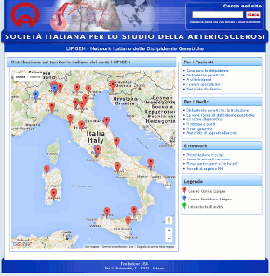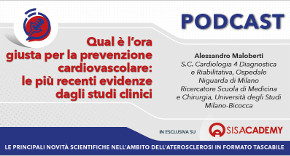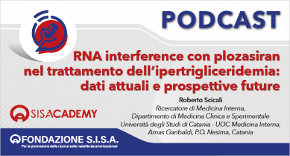 Rivista in lingua italiana
Rivista in lingua italiana
riservata ai Soci SISA
Ultimo numero:
Anno 16 • N.1/2025
Abstract
Interactive effects of fitness and statin treatment on mortality risk in veterans with dyslipidaemia: a cohort study
Kokkinos PF, Faselis C, Myers J, Panagiotakos D, Doumas M
Lancet 2013;381:394-9
BACKGROUND: Statins are commonly prescribed for management of dyslipidaemia and cardiovascular disease. Increased fitness is also associated with low mortality and is recommended as an essential part of promoting health. However, little information exists about the combined effects of fitness and statin treatment on all-cause mortality. We assessed the combined effects of statin treatment and fitness on all-cause mortality risk.
METHODS: In this prospective cohort study, we included dyslipidaemic veterans from Veterans Affairs Medical Centers in Palo Alto, CA, and Washington DC, USA, who had had an exercise tolerance test between 1986, and 2011. We assigned participants to one of four fitness categories based on peak metabolic equivalents (MET) achieved during exercise test and eight categories based on fitness status and statin treatment. The primary endpoint was all-cause mortality adjusted for age, body-mass index, ethnic origin, sex, history of cardiovascular disease, cardiovascular drugs, and cardiovascular risk factors. We assessed mortality from Veteran's Affairs' records on Dec 31, 2011. We compared groups with Cox proportional hazard model.
FINDINGS: We assessed 10,043 participants (mean age 58·8 years, SD 10·9 years). During a median follow-up of 10·0 years (IQR 6·0-14·2), 2318 patients died, with an average yearly mortality rate of 22 deaths per 1000 person-years. Mortality risk was 18·5% (935/5046) in people taking statins versus 27·7% (1386/4997) in those not taking statins (p<0·0001). In patients who took statins, mortality risk decreased as fitness increased; for highly fit individuals (>9 MET; n=694), the hazard ratio (HR) was 0·30 (95% CI 0·21-0·41; p<0·0001) compared with least fit (=5 METs) patients (HR 1; n=1060). For those not treated with statins, the HR for least fit participants (n=1024) was 1·35 (95% CI 1·17-1·54; p<0·0001) and progressively decreased to 0·53 (95% CI 0·44-0·65; p<0·0001) for those in the highest fitness category (n=1498).
INTERPRETATION: Statin treatment and increased fitness are independently associated with low mortality among dyslipidaemic individuals. The combination of statin treatment and increased fitness resulted in substantially lower mortality risk than either alone, reinforcing the importance of physical activity for individuals with dyslipidaemia.

Area Soci
Eventi
39° Congresso Nazionale
 39° Congresso Nazionale
39° Congresso NazionaleRoma, 23-25 novembre 2025
Save the date




 Spring Meeting Gruppi Giovani SID, SIGG, SIIA, SIMI, SIPREC, SISA
Spring Meeting Gruppi Giovani SID, SIGG, SIIA, SIMI, SIPREC, SISARimini, 6-8 aprile 2025
[continua a leggere]
 SISA LIPID ACADEMY - Corso avanzato di lipidologia clinica
SISA LIPID ACADEMY - Corso avanzato di lipidologia clinicaModena, 4-5 Luglio 2024
[continua a leggere]Giornale Italiano Arteriosclerosi
HoFH today
 Rivista Italiana della
Rivista Italiana della
Ipercolesterolemia
Familiare Omozigote
Anno 6 • N.1/2024
Rivista NMCD
Diateca
[continua a leggere]
[continua a leggere]
Newsletter
il vostro indirizzo di posta elettronica
Progetto LIPIGEN

Nuovo sito dedicato al Progetto LIPIGEN
Progetto LIPIGEN - Vecchio portale
E' necessario essere loggati come utente
Lipigen per poter accedere alla pagina
PROject Statin Intolerance SISA
PROSISA – PROject Statin Intolerance SISA
E' necessario essere loggati come utente
PROSISA per poter accedere alla pagina
GILA - Lipoprotein Aferesi
Gruppo Interdisciplinare Lipoprotein Aferesi
(Accesso Gruppo GILA-Lipoprotein Aferesi)
E' necessario essere loggati come utente del Gruppo GILA per poter accedere
Gruppo Interdisciplinare Lipoprotein Aferesi
(Documentazione ad accesso libero)
Pagina informativa per medici e pazienti










